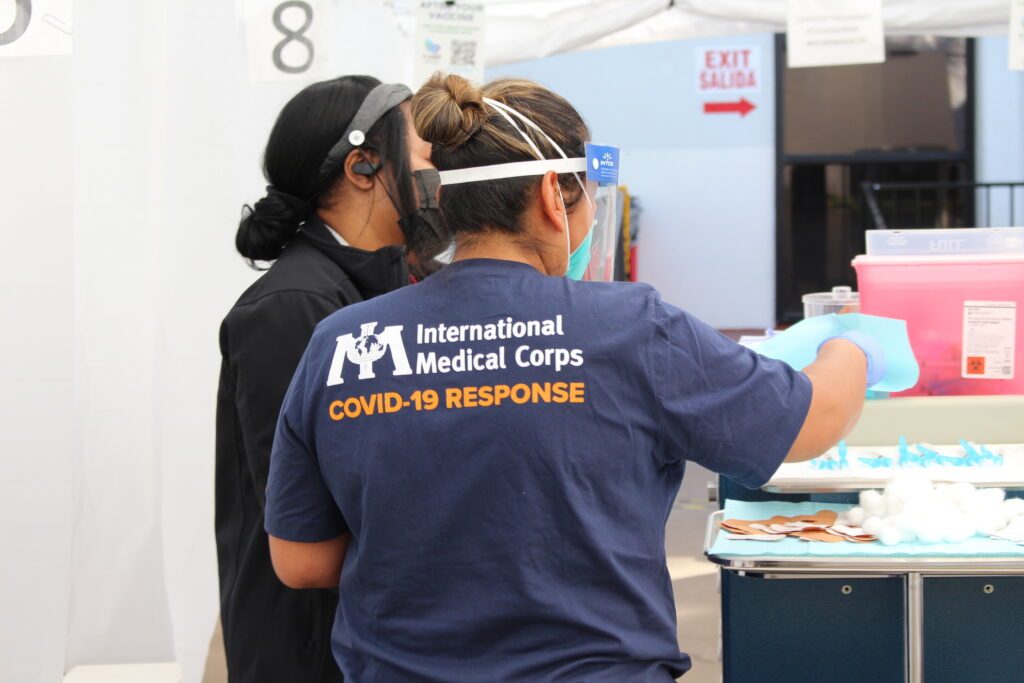As the COVID-19 outbreak took hold in the United States in early 2020, our Emergency Response Unit (ERU) at International Medical Corps knew exactly the approach we needed to take, based on our decades of responding to humanitarian disasters around the world: determine which entities are doing the most to deliver efficient care in underserved communities, then provide them with the resources they need to scale up and keep going.
The ERU immediately began working to strengthen one of the nation’s most important lines of defense: hospitals that were struggling to keep up with staggering caseloads and mounting deaths. We focused our efforts on helping them weather the onslaught, to keep them open and fully operational.
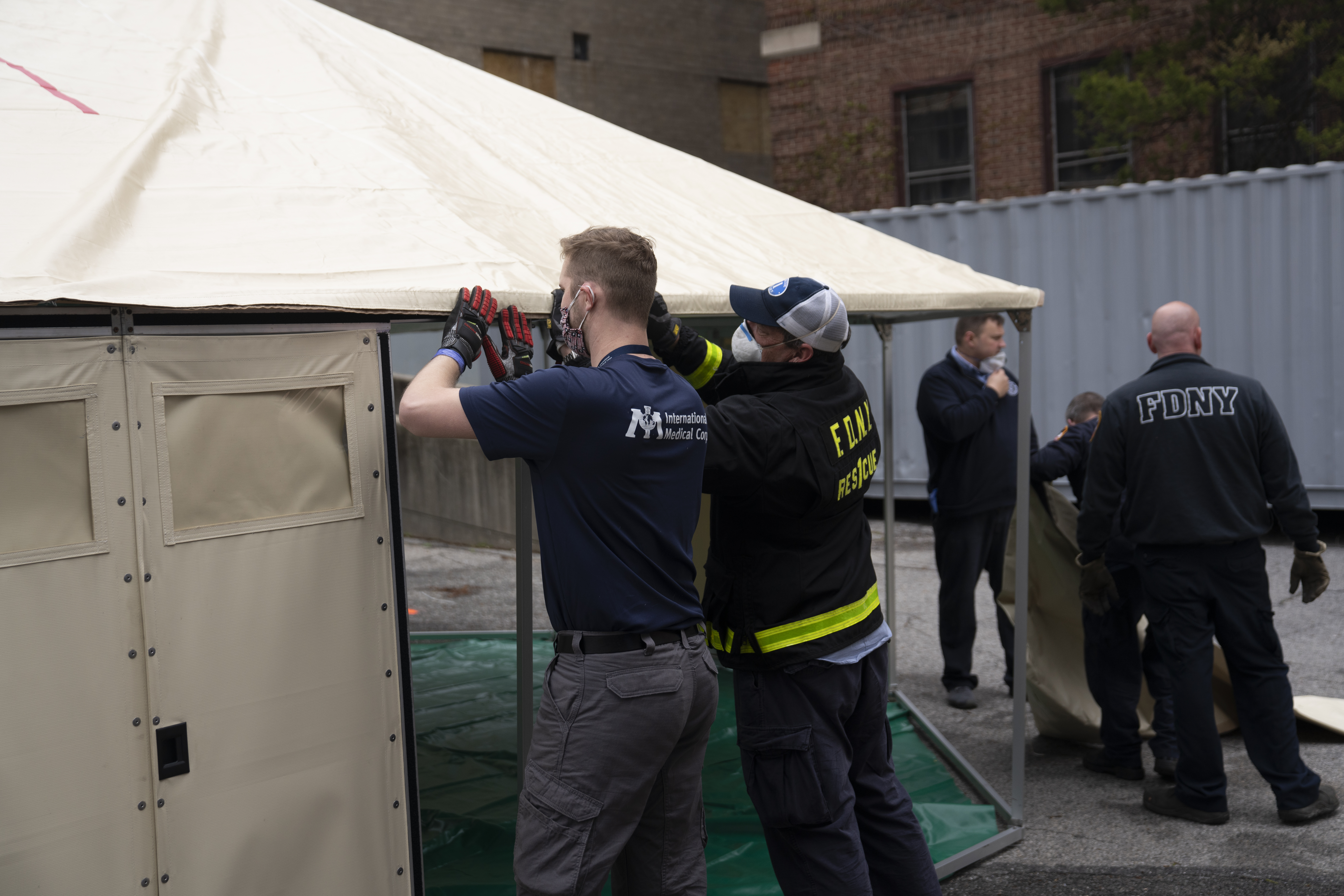
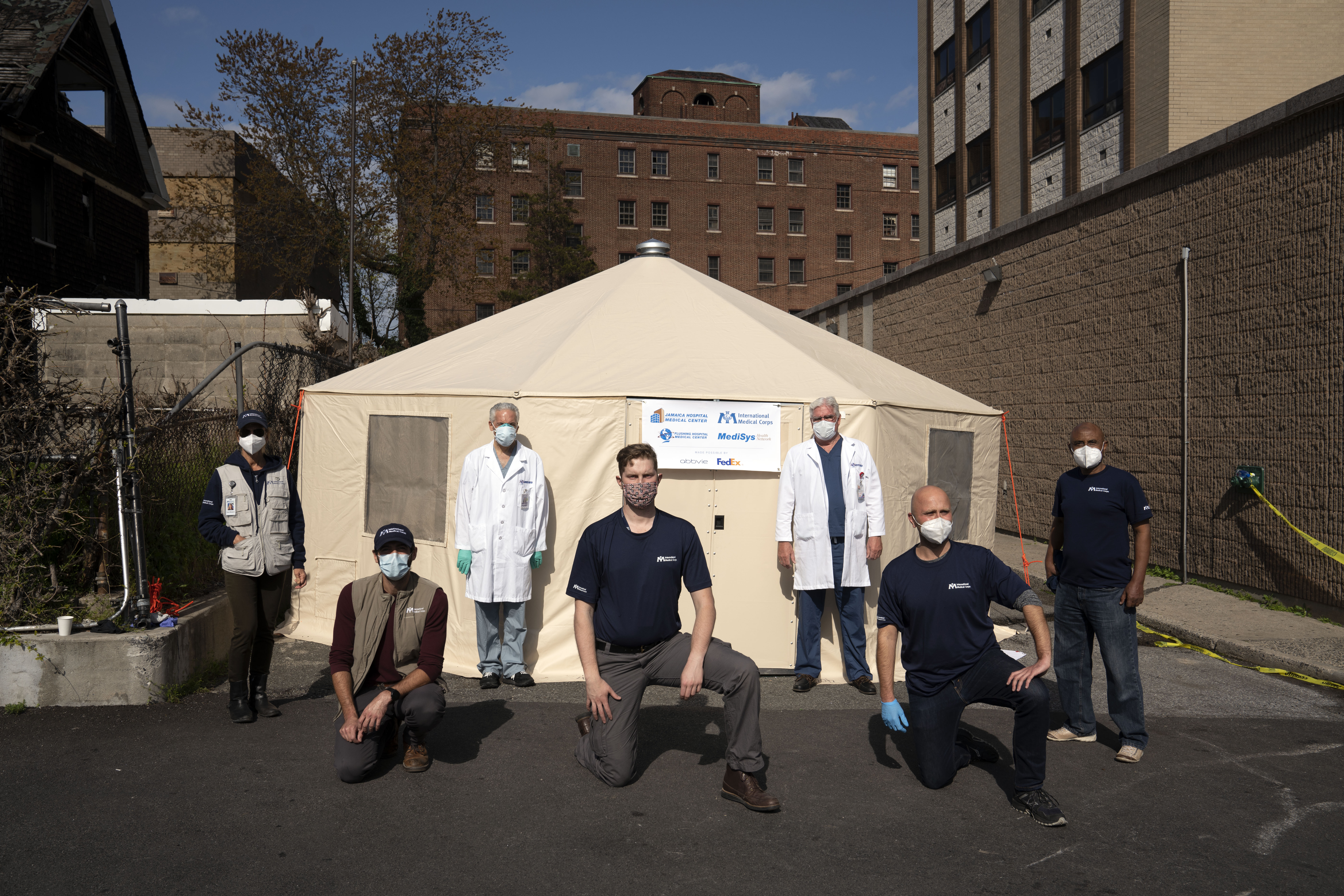

This approach is based on important lessons that International Medical Corps has learned during our many public health responses around the world—whether battling Ebola in Africa, caring for earthquake victims in Haiti or Nepal, or responding to conflicts from the Balkans to Yemen. Rather than building new infrastructure and systems from scratch, we know that it’s better to strengthen local communities and partners by quickly providing the services, equipment and training they need to respond to the challenges they’re facing.
Program Officer Jonah Sargent helped to manage our response at Flushing Hospital, a hard-hit health facility in a low-income area of Queens, NY, during the height of the crisis there.
“We were able to use our existing supply-chain relationships to provide much-needed medical supplies and equipment—all of which were in high demand,” explained Sargent. “And we brought in clinical volunteers from around the country to relieve exhausted doctors and nurses who were dealing with an overwhelming influx of critically ill COVID-19 patients.”
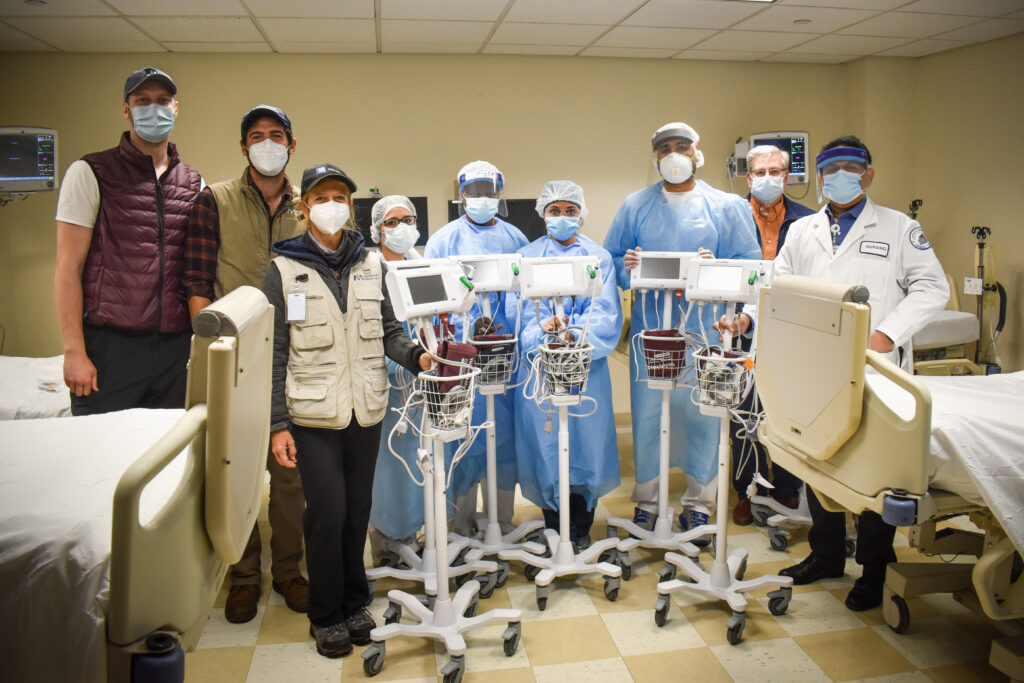
Once the number of cases had fallen to more manageable levels and innovative vaccines began to become available, Sargent found himself tasked with addressing the needs of underserved communities in International Medical Corps’ hometown of Los Angeles, where we began our support of hospitals in March 2020. He reached out to leadership at health facilities around the city to ask if they needed additional support. One of the first to respond was Dr. Jerry Abraham, Director of Vaccines at Kedren Community Health Center in South LA, an area that has been disproportionately affected by COVID-19.
After meeting with Dr. Abraham, Sargent knew Kedren was a place where International Medical Corps could make a difference. “Kedren was already leading a successful program. But it was growing so fast. It needed extra support to keep up with the demand.”
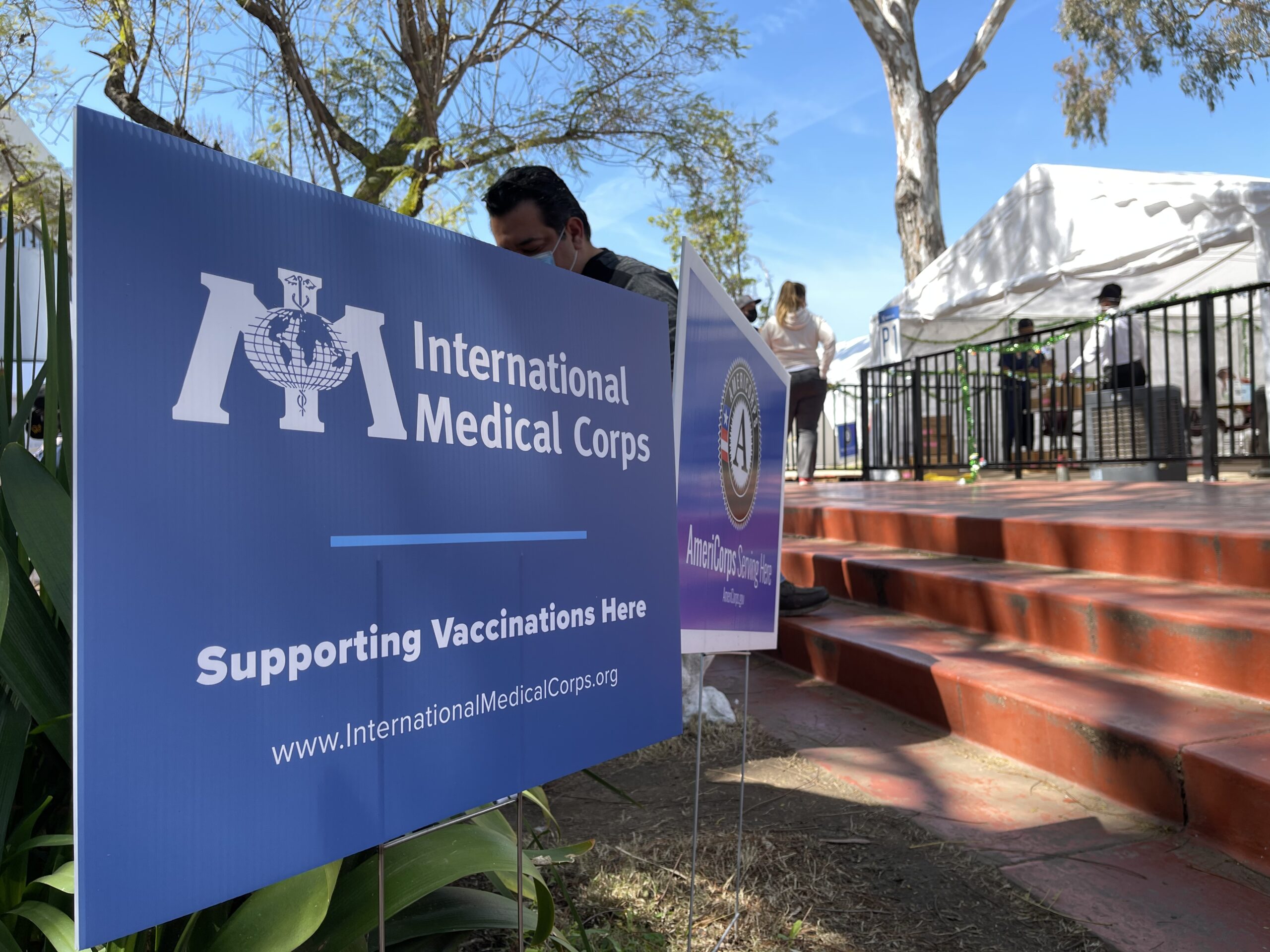
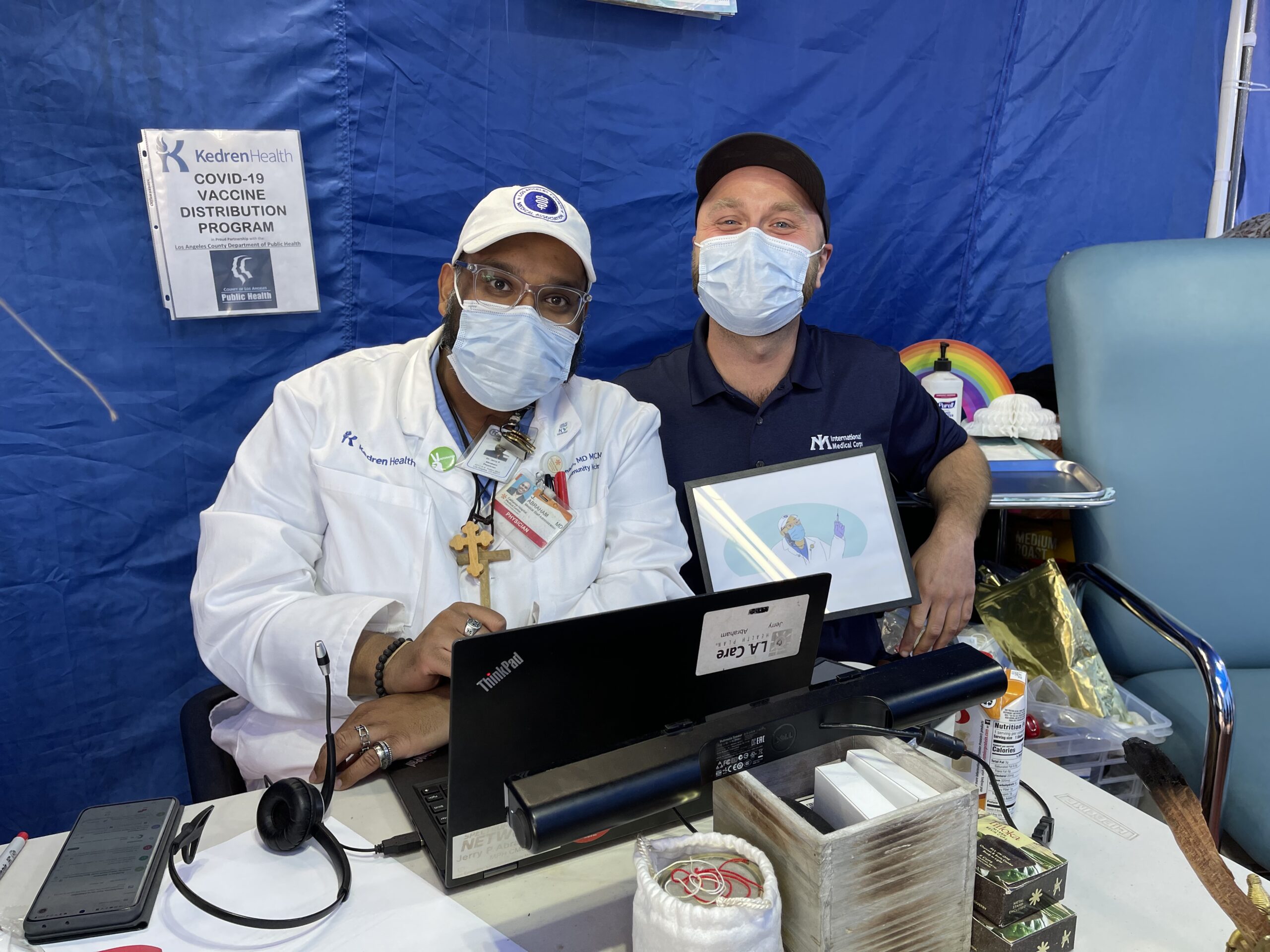
Another critical factor was that Kedren had a longstanding relationship with the local community. “They had the trust of the community. Dr. Abraham had a vision and his team was executing on the vision,” explains Sargent. “We were able to provide consistent, stable support in the form of volunteer clinicians, technical expertise, donations of supplies, emergency medical field units and other equipment. All of that reinforcement meant that Kedren could continue to expand services into the nighttime, open a satellite vaccination site in Watts and send out mobile vaccination teams—they could penetrate into pockets of the community that otherwise could not make it to the main Kedren campus due to mobility issues or time constraints.”
Asked why, with its years of experience and expertise responding to outbreaks of infectious disease, International Medical Corps didn’t just set up our own vaccination site, Sargent responds,
“There’s no need to reinvent the wheel. If we had started our own vaccination facility, we would never have been able to accomplish anything close to what has happened here. When you factor in the cost of things like renting a facility, nonclinical and clinical staffing, and the insurance to cover the entire endeavor—supporting an existing health system is so much more effective, in terms of both return on investment and the immediacy and scope of the impact we’re able to have.”
He adds, “Maybe the most important part of this is that Kedren knows who to call—on speed dial are trusted local leaders who help to amplify outreach and messaging about the vaccines and the services. This brings in the community much more effectively than any amount of ad spending by an outside organization could. Because Kedren was founded by a group of Black psychiatrists in the 1960s to address poverty, discrimination, violence and education gaps, it has a level of trust in the area that does not happen overnight.”
This strategy worked.
According to Sargent, “Kedren administers around 4,000 shots every day, seven days a week.”
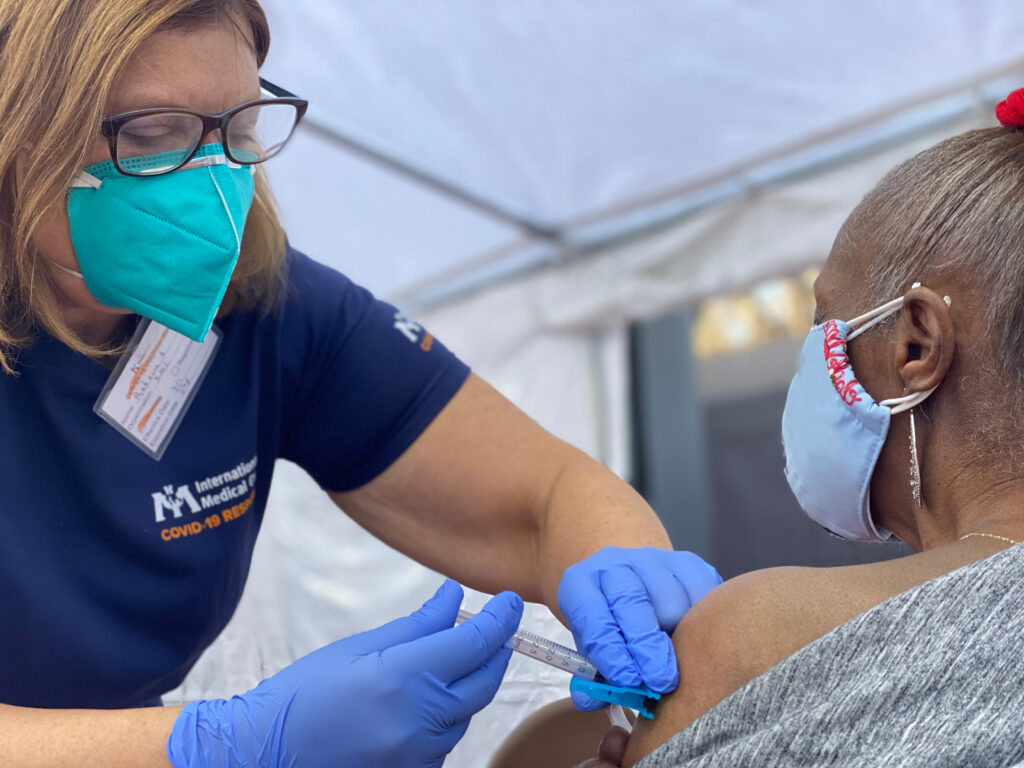
Since the beginning of the pandemic, International Medical Corps’ efforts to battle COVID-19 in the United States have so far helped 43 hospitals, 21 health clinics and 56 long-term care facilities in 34 cities across nine states and Puerto Rico. We have deployed 59 emergency medical field units, which hospitals can configure for testing, triage and treatment, or even use to house additional patient beds. We have deployed more than 200 volunteers and staff to hard-hit hospitals to relieve exhausted frontline professionals, and developed virtual and in-person training programs that have reached over 3,200 people. And despite heavily strained global supply chains, our teams have so far managed to secure and deliver 6.6 million items of personal protective equipment, or PPE, to healthcare professionals, as well as thousands of pieces of medical equipment. Of course, we continue to support vaccination efforts around the country.
In a critical health emergency, there is no more efficient and effective way of helping crisis-affected communities than by building the capacity of local health systems. As International Medical Corps continues to confront COVID-19 around the world, we’ll use our resources and expertise to support local health systems that already have the necessary infrastructure—and community knowledge and trust—to provide medical care. By tapping into existing infrastructure and systems, we will help communities recover, build resilience—and better prepare for the next pandemic.
